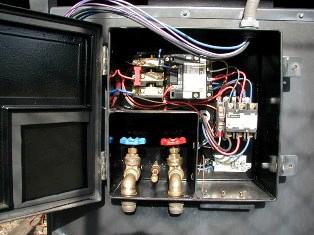Selection of control and protection devices
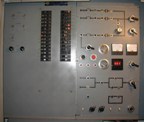 The selection of switching devices and protective devices for electrical receivers is made on the basis of the nominal data of the latter and the parameters of their power network, requirements for protection of the receivers and the network from abnormal modes, operational requirements, in particular the switching frequency and environmental conditions environment where the devices are installed.
The selection of switching devices and protective devices for electrical receivers is made on the basis of the nominal data of the latter and the parameters of their power network, requirements for protection of the receivers and the network from abnormal modes, operational requirements, in particular the switching frequency and environmental conditions environment where the devices are installed.
Selection of devices by type of current, number of poles, voltage and power
The design of all electrical devices is calculated and marked by manufacturers for voltage, current and power values determined for each device, as well as for a specific mode of operation. Thus, the selection of equipment for all these characteristics essentially boils down to finding, based on catalog data, the appropriate types and sizes of apparatus.
Selection of devices according to the conditions of electrical protection
When choosing protective devices, you should consider the possibility of the following abnormal modes:
a) phase-phase short circuits,
b) closing the housing phase,
c) an increase in the current caused by an overload of technological equipment, and sometimes an incomplete short circuit,
d) the disappearance or excessive reduction of voltage.
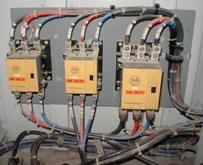
Overload protection is required for all continuous duty power consumers, except in the following cases:
a) when the overloading of electrical receivers for technological reasons cannot be carried out or is unlikely (centrifugal pumps, fans, etc.),
b) for electric motors with a power of less than 1 kW.
Overload protection is optional for electric motors operating in short-term or intermittent modes. In hazardous areas, overload protection of electrical receivers is mandatory in all cases. Low voltage protection must be installed in the following cases:
a) for electric motors that cannot be connected to the network at full voltage,
b) for electric motors whose self-starting is unacceptable for technological reasons or poses a danger to service personnel,
c) for other electric motors, the shutdown of which in the event of a power failure is necessary to reduce to the permissible value the total starting power of the electrical consumers connected to the network, and possibly from the point of view of the operating conditions of the mechanisms.
In addition to the above, DC, parallel and mixed-excitation motors must be protected against excessive speed increases in cases where such increases may result in danger to human life or significant losses.
Protection against an excessive increase in the number of revolutions can be carried out by various special relays (centrifugal, induction, etc.).
Since overload and short-circuit protection is of particular importance in power networks, we will dwell in a little more detail on the fundamental side of this issue.
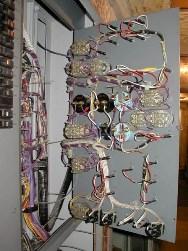
An overload current is any current in excess of the motor's rated current, but there is no reason to require the motor to be tripped at every overload.
It is known that a certain overload of both electric motors and their supply networks is permissible, and that the shorter the overload, the greater its value. Therefore, the overload protection advantages of such devices which have a "dependent characteristic", i.e., whose response time decreases as the overload multiple increases, are clear.
Since, with very rare exceptions, the protective device remains in the motor circuit even during starting, it should not be tripped with a starting current of normal duration.
From the above considerations, it is clear that, in principle, for protection against short-circuit currents, a non-inertial device set to a current significantly higher than the initial one should be used, and for overload protection, on the contrary, an inertial device with a dependent characteristic, chosen so , so that it doesn't work on timed startup. To the greatest extent, these conditions are met by a combined release that combines thermal overload protection and instantaneous electromagnetic tripping in case of short-circuit current.
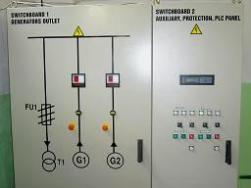
From this point of view, let us now evaluate the various protective devices used.
Fuses, which were previously widely used as protective devices, have a number of disadvantages, the main ones being:
a) limited application for overload protection, due to the difficulty in setting inrush currents,
b) insufficient, in some cases, the maximum disconnected power,
c) the continuation of the operation of the electric motor in two phases when the insert burns out in the third phase, which often leads to damage to the windings of the motor,
d) the lack of possibility to quickly recover the food,
e) the possibility of using uncalibrated inserts by the operational staff,
f) the development of an accident with some types of fuses, due to the transfer of the arc to adjacent phases,
g) quite a large spread of current time characteristics even for homogeneous products.
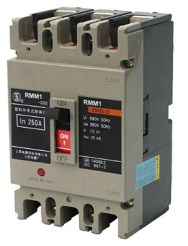 Compared to fuses, air machines are more sophisticated protection devices, but they have indiscriminate action, especially for unregulated interrupting currents in automatic installation machines, although universal machines have the ability to selectivity, this is done in a complicated way.
Compared to fuses, air machines are more sophisticated protection devices, but they have indiscriminate action, especially for unregulated interrupting currents in automatic installation machines, although universal machines have the ability to selectivity, this is done in a complicated way.
It should be noted that overload protection for installation automatic devices is provided by thermal releases. These releases are less sensitive than the thermal relays of magnetic starters, but are installed on three phases.
In universal machines, the overload protection is even more crude, since they have only one electromagnetic release. At the same time, it is possible to perform undervoltage protection in universal machines.
Magnetic starters with the help of built-in thermal relays, they provide sensitive two-phase overload protection, but due to the large thermal inertia of the relay, they do not provide short-circuit protection. The presence of a holding coil in the starters allows undervoltage protection.
Overload and short-circuit protection can be provided by current electromagnetic and induction relays, but they can also act only through a tripping device, and the circuits using them are more complex.
Considering the above and the set of requirements for control and protection devices, the following recommendations can be made.
1. For manual control of electrical receivers with low inrush currents can be
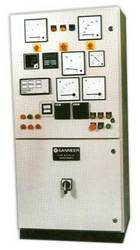
2. For manual control of electric motors with power up to 3 — 4 kW, which do not require overload protection packet switches.
3. For electric motors up to 55 kW requiring overload protection, the most common devices are magnetic starters in combination with fuses or air circuit breakers.
With an electric motor power of more than 55 kW, electromagnetic contactors in combination with protective relays or air circuit breakers. It must be remembered that the contactors do not allow the circuit to be broken in the event of a short circuit.
4. For remote control of electrical energy consumers, the use of magnetic starters or contactors is required.
5. For manual control of electric receivers with a small number of starts per hour, it is possible to use automatic switches.

